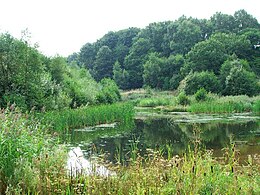
Back Trofiese vlak Afrikaans مستوى غذائي Arabic Nivel tróficu AST Трафічны ўзровень Byelorussian Nivell tròfic Catalan Trofisk niveau Danish Trophieniveau German Trofa nivelo Esperanto Nivel trófico Spanish Troofiline tase Estonian

The trophic level of an organism is the position it occupies in a food web. Within a food web, a food chain is a succession of organisms that eat other organisms and may, in turn, be eaten themselves. The trophic level of an organism is the number of steps it is from the start of the chain. A food web starts at trophic level 1 with primary producers such as plants, can move to herbivores at level 2, carnivores at level 3 or higher, and typically finish with apex predators at level 4 or 5. The path along the chain can form either a one-way flow or a part of a wider food "web". Ecological communities with higher biodiversity form more complex trophic paths.
The word trophic derives from the Greek τροφή (trophē) referring to food or nourishment.[1]